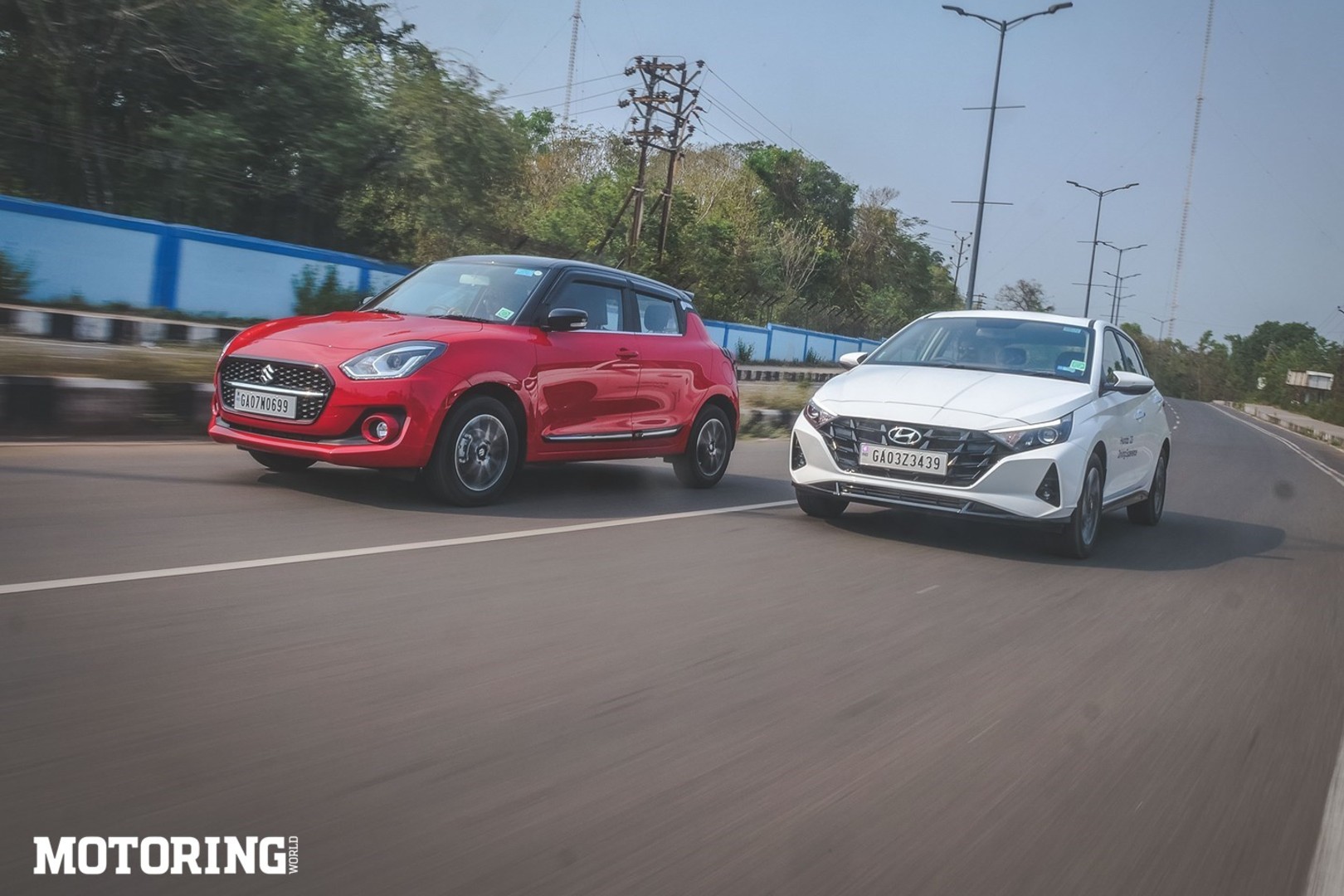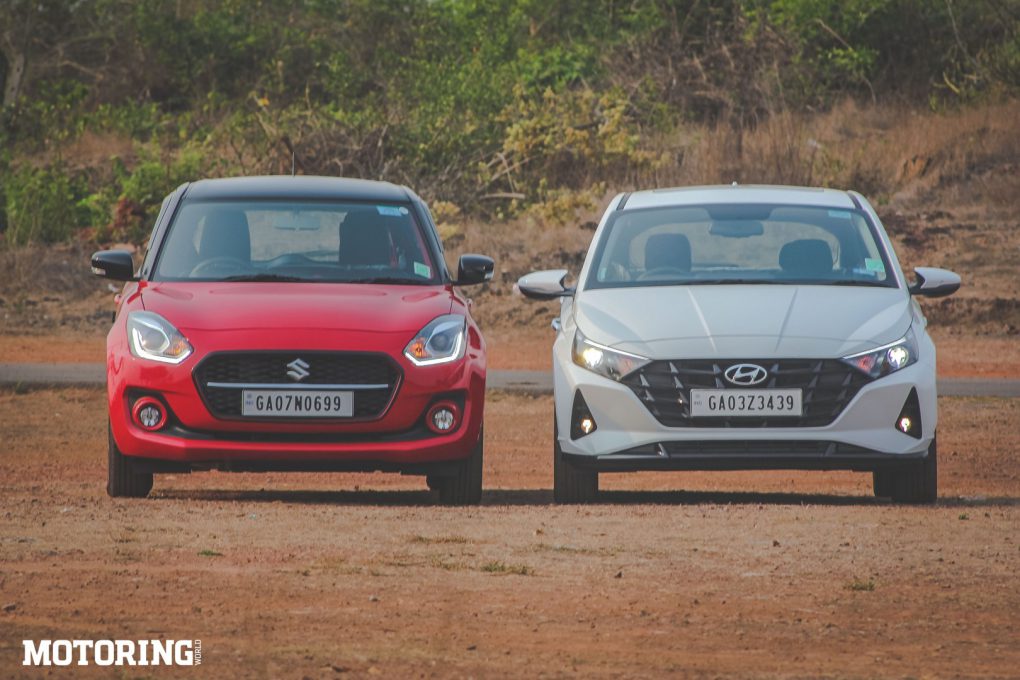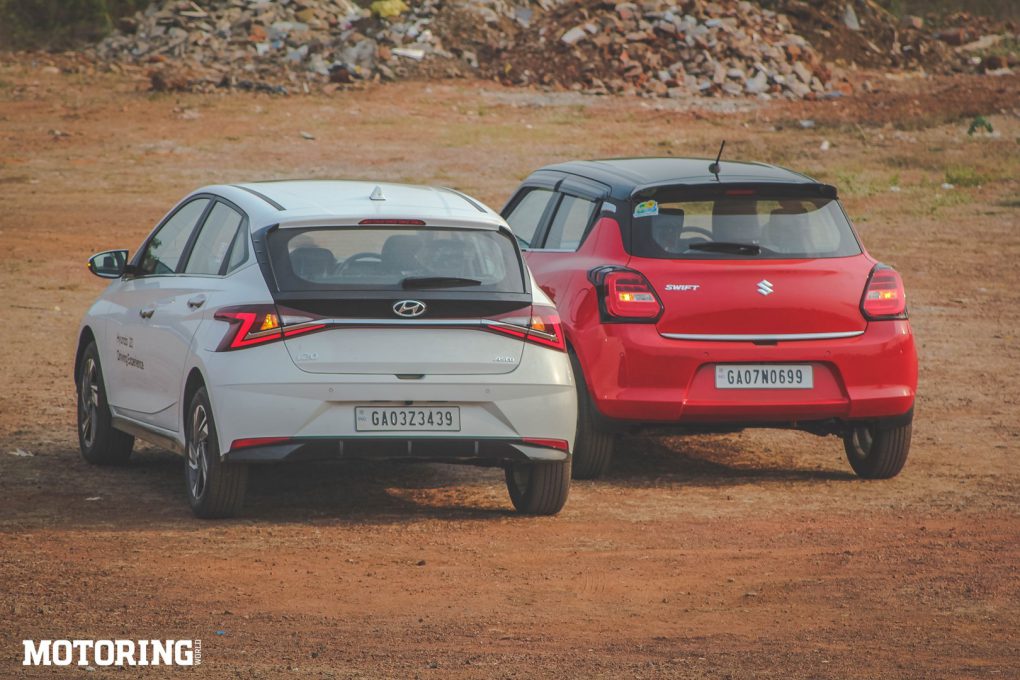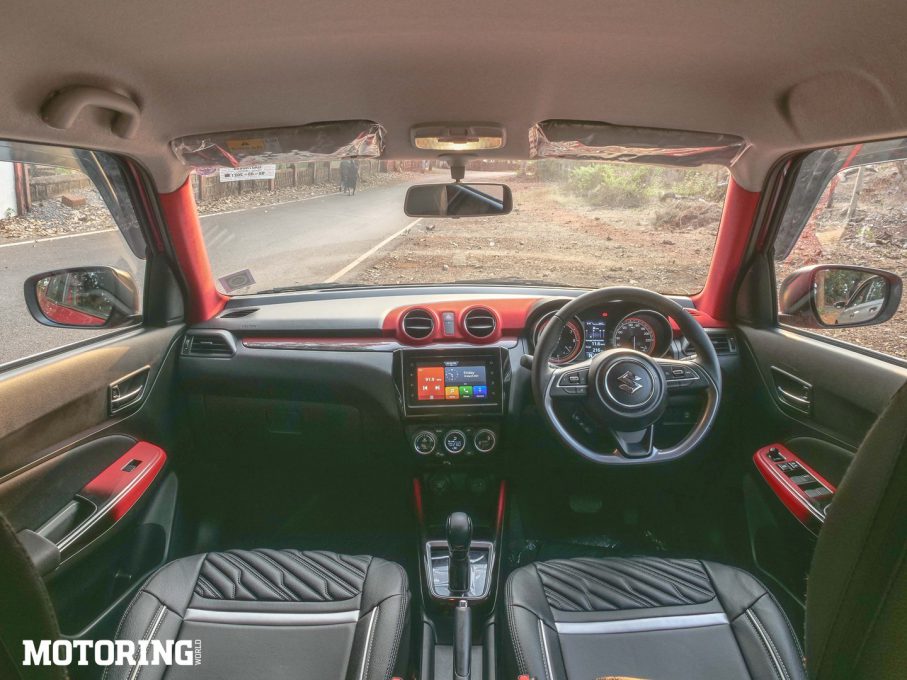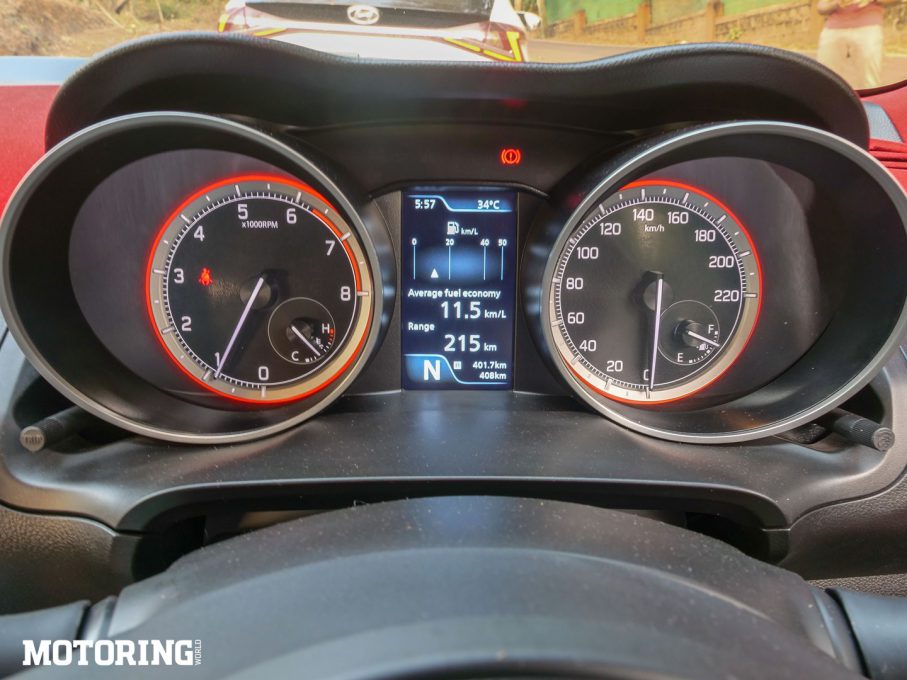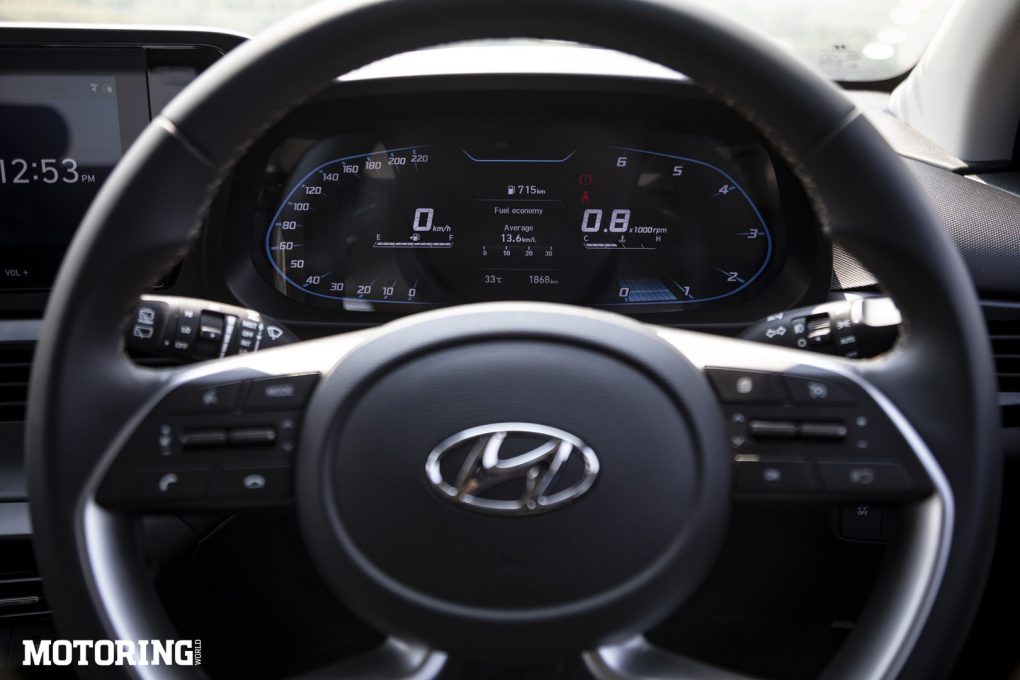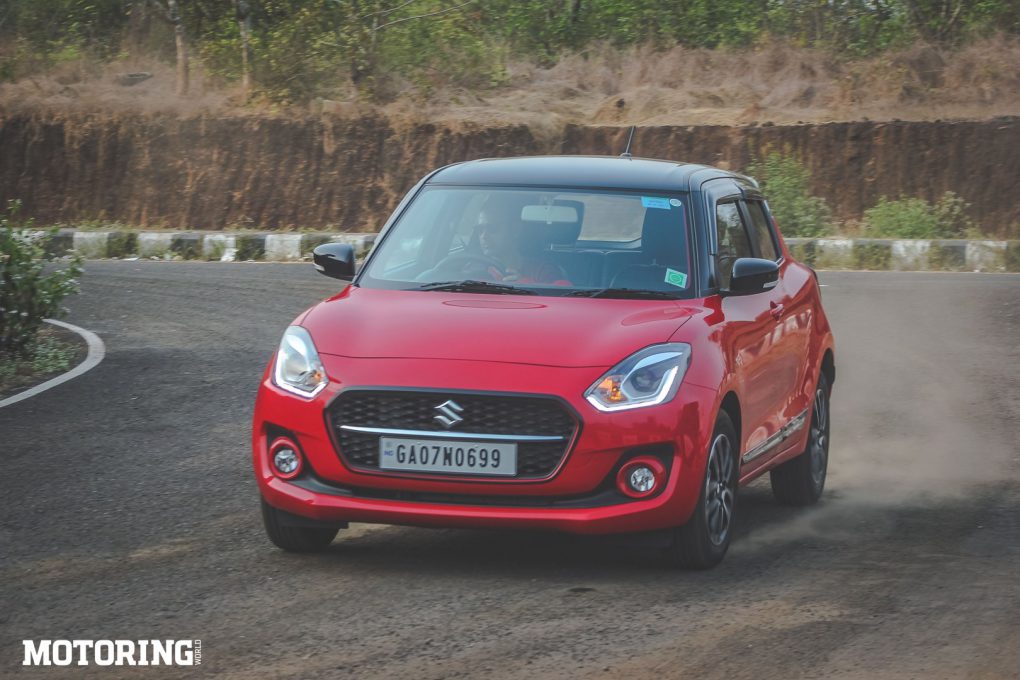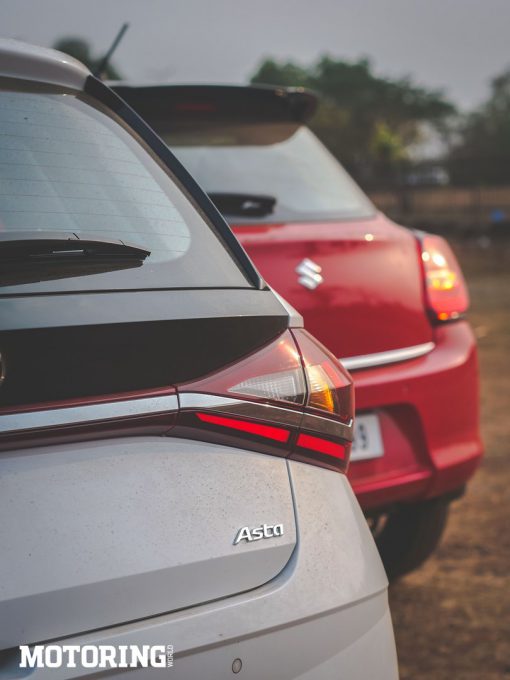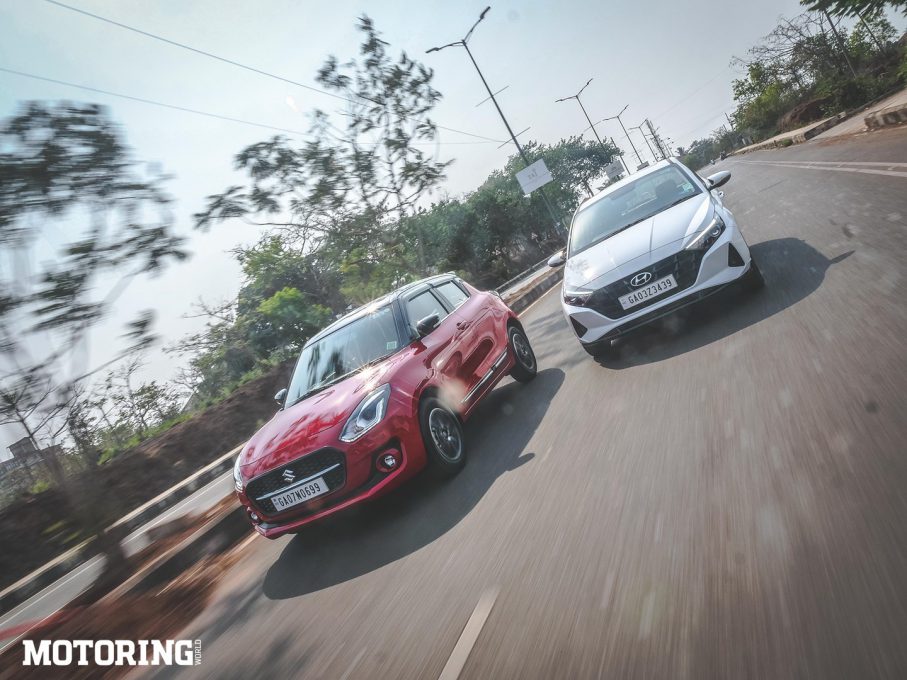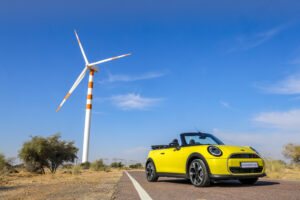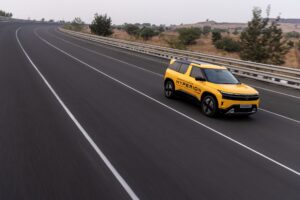The Maruti Suzuki Swift is a car that every manufacturer in India secretly wishes it could have in its lineup. There’s virtually nothing that it hasn’t achieved since its launch in 2005. It’s been voted Indian Car Of The Year three times, once for each of its generations, and no other single model has won this award as many times. It has sold well over 20 lakh units since launch. It was the largest-selling car in India in 2020 and has consistently been among the top five best-selling cars here over the years. It appeals to a wide audience — families, couples, boy racers, college students and more. It’s good looking, practical, fun to drive and economical to run. In other words, it’s the very definition of an all-rounder. The Hyundai i20 definitely wishes it could be the Swift in the numbers game, but it’s also happy to have a character all its own. It’s also picked up an ICOTY award in the past, is the current ICOTY, and sells in quantities that, taken on their own, are very impressive. Pitting these two cars against each other is but a natural event, then, so let’s see how things pan out.
ON THE OUTSIDE
You’d be hard-pressed to tell the facelifted 2021 Swift apart from the previous model at first glance. It still looks cheerful, lively and frankly quite smashing, and only a closer look at its grille reveals the new elements — a (thankfully) tasteful chrome strip running across the middle of it, along with a mesh pattern in black, rather than the older slats. Disclaimer: the car you see in these photographs has a number of non-standard embellishments, because the dealership has kitted it out with almost everything it could find on the options list. Other than the grille, this Swift doesn’t look any different, which is a good thing because it’s one of those cars that is easy on the eye from any angle. You can now option it in a two-tone finish in three colours – red with a black roof, blue with a white roof, and white with a black roof. Pro tip – the red one remains the most attractive.
The new i20 is… something. What that something is depends on which side of the fence you’re sitting on. It’s very much a part of Hyundai’s ‘Sensuous Sportiness’ design language, which means that it’s either dancing on the edgy side of things or a bit of an eyesore (I’ve heard both things said of it); personally, I think the excesses work quite well. Firstly, it looks far more premium than the older car, straight off the bat, and it’s now the widest car in the segment, which bodes well for interior space. The frameless grille is striking, as are the swept-back headlights, and the profusion of slashes and creases all over the car definitely give it a very unique character. Seen from the side, there’s a sportiness to its forward-leaning stance, and the rear stands out because of its width and those funky LED tail-lamps. I rather like the way this car looks, but I still have to give this round to the Swift because of the fact that it looks great without trying as hard as the i20.
THE INSIDE STUFF
The Swift’s cabin hasn’t changed all that much over the pre-facelift model. Additions include a SmartPlay Studio system, with the mid-range V spec car receiving a 2-DIN system; top-spec cars also get cruise control and a colour screen between the two very sporty dials which continue to look great. There’s also some updated seat upholstery, and the seats themselves are pretty comfortable. Rear-seat space remains quite generous, and overall (other than some slightly sub-par plastics and the lack of connected tech and a sunroof) this is an up-to-the-mark interior
It’s not, however, as up to the mark as the i20. There’s a perceptible difference in the quality of materials and the way things are laid out in the Hyundai, and it’s a much more liveable space. Sitting in the driver’s seat, you get a wide view of the road – thanks in part to that dashboard, which is placed low down – and ergonomically, all the essentials fall easily to hand. That infotainment screen is the largest in this class, is easy to use and has Hyundai’s connected tech, and it’s nicely integrated on the dashboard; there’s also a Bose sound system. The A/C controls are rocker switches (always a nice addition), and the vents are in line with the horizontal slats that run the width of the dashboard, providing some detail. Plastic quality is more than acceptable, as are fit and finish levels.
The instruments look great but are actually quite hard to read, so thankfully there are also clear digital readouts of speed and engine rpm. Other features on top-spec models include a sunroof, an air purifier, tyre pressure monitoring, auto climate control and ambient lighting. The rear seats are now much more spacious, with plenty of head and knee room; those at the back get A/C vents and a USB charging port. I found that I could never figure a comfortable seating position in the driver’s seat, on the downside; there was too much padding in the lumbar region and not enough under-thigh support.
ALL GOOD UNDER THE HOOD
The 2021 Swift’s refined 1.2-litre DualJet petrol engine comes with twin injectors for each of its four cylinders, which means that the injection process is more efficient and, just as importantly, power and fuel efficiency have gone up. The engine now makes 90 bhp, alongside 11.5 kgm of torque, and also comes with an idle start-stop function; Maruti Suzuki claims a fuel efficiency figure of 23.2 kpl. The thing you quickly notice about this engine is that it’s much more responsive at the lower end of the rev range and in city conditions. It’s also the right level of lively, and when you give it some stick, it pulls effortlessly all the way to its 6400-rpm redline, sounding entertaining while at it. The 5-speed gearbox remains slick and easy to use.
The i20’s 1.2-litre petrol engine is down on power compared with the Swift – 83 bhp – but slightly up on torque, with 11.7 kgm. It’s also extremely refined and has a very smooth 5-speed manual, but the issue is that it’s a bit of a laggard at slow speeds. You really have to rev the powerplant hard to get any kind of serious forward movement going, with peak torque kicking in around the 4000-rpm mark. This is very entertaining on an open, winding road where you can keep the engine on the boil, but since the bulk of most people’s driving is done in a city, some working of the gearbox is needed in traffic. The clutch is light, so your left leg won’t keel over from exhaustion, but there’s no doubt that overall, the Swift has the peppier, more useable engine.
ON THE MOVE
Maruti’s best-selling hatchback has been entertaining enthusiastic drivers for 15 years, and it’s easy to see why. It’s light and easy to drive at all speeds, and loves to be driven hard and thrown around corners. The steering wheel remains a little light at higher velocities, but that’s not much of a deal-breaker because of the sheer weight (see what I did there?) of the amusement package on offer. The car does have a slightly harsh low-speed ride, but is otherwise extremely well planted; the brakes are excellent as well.
The i20 was never the Swift’s equivalent in the agility stakes, and it still isn’t quite there. The steering wheel is now much more weighty (thank goodness) than in the earlier car, and turn-in is more precise, but it’s all a bit… neutral and bland. During fast cornering, the tyres don’t seem to be able to keep up with the chassis in terms of grip, resulting in some washing-wide moments. Also, the car tends to wriggle around a little under hard braking, which can be irritating. The i20 is more suited for the daily drive and the long-distance trip, not so much the weekend blast in a set of twisties. The ride quality, however, is top class and much better than that of the Swift – the suspension is very well damped indeed. Here, I’m going to have to declare a tie, since both cars do different things brilliantly.
SO WHICH ONE, THEN?
The i20 has become a much better car now in every aspect, but it’s also become pretty damn expensive – every variant is well over a lakh of rupees more than the equivalent Swift. This would normally be the kicker in a shootout, but here’s the thing – I believe it’s worth the extra money, especially if you’re going down the EMI route. The Swift is cheaper, has a livelier petrol engine, is more fun to drive and better looking, to be sure. The Hyundai, however, has a certain X factor to it, and it rides better, comes with more features, and has a superior cabin, all of which make it a better car to live with on a daily basis; not for nothing is it the ICOTY for 2020, and our own Hatchback Of The Year. The Hyundai wins this one, then – but not without a hell of a fight from the Swift.
AUTODATA
Maruti Suzuki Swift
POWERTRAIN
Displacement: 1197cc, i-4, petrol
Max power: 89 bhp@6000 rpm
Max torque: 11.52 kgm@4400 rpm
Transmission: 5-speed, manual
TYRES
F/R: 185/65 R15
DIMENSIONS
L/W/H (mm): 3845/1735/1530
Wheelbase: 2450 mm
Ground clearance: NA
Kerb weight: 905 kg
Fuel capacity: 37 litres
PRICE: Rs 5.73 to 8.41 lakh (ex-showroom, Delhi)
AUTODATA
Hyundai i20
POWERTRAIN
Displacement: 1197cc, I-4, petrol
Max power: 82 bhp@6000 rpm
Max torque: 11.7 kgm@1500-4000 rpm
Transmission: 5-speed, manual
TYRES
F/R: 195/55 R16
DIMENSIONS
L/W/H (mm): 3995/1775/1505
Wheelbase: 2580 mm
Ground clearance: 170 mm
Kerb Weight: NA
Fuel capacity: 37 litres
PRICE: Rs 6.79 to 11.32 lakh (ex-showroom, India)





